#topological qubits
Text
Quantum information, entropy and emergence, and the dispersed arrow of time in the quantum realm

So, I did some new art right now. I used a white Faber-Castell artist pen brush on a black DIN A5 piece of paper (220 g/m^2).
Maybe one day I might be able to explain the concepts and ideas I depicted.
#quantum information#fuzzy logic#quantum logic#quantum mechanics#art#surrealism#science art#math art#math#mathematics#physics#physics art#surreal#quantum physics#stem#stem and art#topological qubits#qubits#möbius strip#non-orientabie surface#arrow of time#entropy#emergence#time#diffraction#interference#entangled#quantum entanglement#momentum
127 notes
·
View notes
Photo

Milestone for light-driven electronics
For about ten years, excitons have been investigated in other two-dimensional semiconductors and regarded as information carriers for light-driven components. For the first time, scientists managed to optically excite excitons in a topological insulator. The interaction between light and excitons means we can expect new phenomena in such materials. This principle could be used, for example, to generate qubits.
https://lnkd.in/gx2396Rc
#nanotechnology#electronics#quantum computing#materials science#engineering#research and development#physics#graphene#advanced materials#technology
40 notes
·
View notes
Text
Researchers Advance Topological Superconductors for Quantum Computing - Technology Org
New Post has been published on https://thedigitalinsider.com/researchers-advance-topological-superconductors-for-quantum-computing-technology-org/
Researchers Advance Topological Superconductors for Quantum Computing - Technology Org
Quantum computers process information using quantum bits, or qubits, based on fragile, short-lived quantum mechanical states. To make qubits robust and tailor them for applications, researchers from the Department of Energy’s Oak Ridge National Laboratory sought to create a new material system.
Materials scientist Robert Moore probes the interface between a topological insulator and a superconductor. Image credit: Carlos Jones/ORNL, U.S. Dept. of Energy
“We are pursuing a new route to create quantum computers using novel materials,” said ORNL materials scientist Robert Moore, who co-led a study published in Advanced Materials with ORNL colleague Matthew Brahlek, also a materials scientist. The work was supported in part by the U.S. National Science Foundation.
The researchers coupled a superconductor, which offers no resistance to electrical current, with a topological insulator, which has electrically conductive surfaces but an insulating interior. The result is an sharp interface between crystalline thin films with different symmetric arrangements of atoms.
The novel interface the researchers designed and engineered may lead to exotic new physics and host a unique quantum building block with potential as a superior qubit.
Quantum computer. Image credit: IBM
“The idea is to make qubits with materials that have more robust quantum mechanical properties,” Moore said. “What is important is that we have learned how to control the electronic structure of the topological insulator and the superconductor independently so we can tailor the electronic structure at that interface.”
Challenges remain. “We need to improve and better understand the materials at the atomic level,” Moore said. “We now know how to control the materials at the level required to make that happen.”
Source: NSF
You can offer your link to a page which is relevant to the topic of this post.
#applications#atoms#Building#computer#computers#computing#crystalline#dept#electronic#energy#Foundation#Fundamental physics news#how#how to#IBM#LED#Link#material#materials#Optics & photonics news#Physics#process#quantum#quantum bits#quantum computer#quantum computers#Quantum Computing#Quantum physics news#qubit#qubits
0 notes
Link
[ad_1] Newswise — Quantum computers process information using quantum bits, or qubits, based on fragile, short-lived quantum mechanical states. To make qubits robust and tailor them for applications, researchers from the Department of Energy’s Oak Ridge National Laboratory sought to create a new material system.“We are pursuing a new route to create quantum computers using novel materials,” said ORNL materials scientist Robert Moore, who co-led a study published in Advanced Materials with ORNL colleague Matthew Brahlek, who is also a materials scientist.They coupled a superconductor, which offers no resistance to electrical current, with a topological insulator, which has electrically conductive surfaces but an insulating interior. The result is an atomically sharp interface between crystalline thin films with different symmetric arrangements of atoms. The novel interface that they designed and engineered may give rise to exotic physics and host a unique quantum building block with potential as a superior qubit.“The idea is to make qubits with materials that have more robust quantum mechanical properties,” Moore said. “What is important is that we have learned how to control the electronic structure of the topological insulator and the superconductor independently, so that we can tailor the electronic structure at that interface. This had never been done.”Controlling the electronic structure on both sides of an interface may create something called Majorana particles inside the material. “In nature, we have particles and antiparticles, for example electrons and positrons, which annihilate each other when they come in contact. A Majorana particle is its own antiparticle,” Moore said. In 1937 Ettore Majorana predicted the existence of these exotic particles, whose existence remains to be proven.In 2008, theorical physicists Liang Fu and Charlie Kane of the University of Pennsylvania proposed that creating a novel interface between a topological insulator and a superconductor would generate topological superconductivity, a new phase of matter predicted to host Majorana particles.“If you have a pair of Majorana particles and move them around each other, there is a memory of this motion. They always know each other’s location,” Moore said. “This process could be used to encode quantum information and compute in new ways.”However, realization of a new phase of matter that can host Majorana particles depends on finding the right material. Such an achievement takes a diverse team of experts.When Moore came to ORNL in 2019, he brought a new expertise in angle-resolved photoemission spectroscopy, or ARPES, a technique for probing the electronic structure of materials. ARPES is based on the photoelectric effect, for which Albert Einstein was awarded the 1921 Nobel Prize in physics. It focuses a light source on a sample and characterizes electrons ejected from the material surface when the electrons absorb energy from the photons. The technique helps scientists understand how electrons behave inside a material.This strategic investment in ARPES expertise helped ORNL win its bid to lead one of five DOE National Quantum Information Science Research Centers, the Quantum Science Center, which launched in 2020. Led by ORNL’s Travis Humble, the QSC aims to realize quantum computing and sensing applications by developing hardware and algorithms and discovering novel materials. Moore and his colleagues focus on topological materials for hardware development. Since April, Moore has also co-directed ORNL’s Interconnected Science Ecosystem, or INTERSECT, with Ben Mintz to develop laboratories of the future — smart, autonomously controlled processes and experiments with the potential to revolutionize research outcomes.Brahlek, who joined ORNL in 2018 and recently received a DOE Early Career Research award, is an expert in precision synthesis of materials. To make superclean interfaces between a superconductor and topological insulator, he used molecular beam epitaxy, a method industry uses for large-scale fabrication of semiconductors for electronic devices.With help from former postdoctoral fellow Tyler Smith, Brahlek performed the synthesis under ultrahigh vacuum. “Inside the chamber, there are fewer molecules bouncing around than in outer space. It is a really clean environment. It must be well controlled,” Brahlek said. “You start with little furnaces, each containing one element. Each furnace heats until the element inside starts to sublimate, or pass from solid to vapor state. This creates beams of elements. They all converge on a crystal substrate and adhere.”He co-deposited iron, selenium and tellurium to make a superconductor that was one atomic layer thick. “If you can get the conditions exactly right, the deposited atoms will chemically bond and assemble, atomic layer by atomic layer, into a crystalline thin film,” Brahlek said.“A key to getting the results was understanding how to combine bismuth telluride with iron selenide telluride at an atomic interface to gain the desired electronic behavior,” Brahlek said.That accomplishment was tricky because the superconductor’s lattice of iron, selenium and tellurium comprises ordered square cells, whereas the topological insulator is a network of adjoining triangles. “We’re putting something square on something triangular, but, surprisingly, the crystalline film grows nicely,” Brahlek said. “This accomplishment requires understanding the physics and chemistry that happen at these interfaces, which is critical to combining topological and superconducting properties in a single platform.”That platform is the topological superconductor. To understand its topological properties, Moore used spin-resolved ARPES, with help from ORNL postdoctoral fellow Qiangsheng Lu, to probe quantum spin-dependent electronic structure at the interface of the topological insulator and the superconductor. Meanwhile, to confirm its superconducting behavior, Brahlek and former ORNL postdoctoral fellows Yun-Yi Pai and Michael Chilcote assisted with measurements of electrical resistance.“We were able to see how the different electronic structures were interacting at the interface, and we were able to control those interactions to ensure all the ingredients for topological superconductivity exist,” Moore said. “We found that the desired topological properties only exist for specific selenium doping ranges. This was a surprise that is crucial for making qubits.”Meanwhile, Hoyeon Jeon and An-Ping Li at ORNL’s Center for Nanophase Materials Sciences used scanning tunneling microscopy to characterize disorder in the materials. ORNL staff scientists Hu Miao and Satoshi Okamoto provided experimental and theoretical guidance throughout the study.Crucial challenges remain. “We need to improve and better understand the materials at the atomic level, which is critical to confirming and using Majorana particles for applications,” Moore said. “The next step will be exploring possible Majorana particles using a newly installed ultralow-temperature scanning tunneling microscope instrument at CNMS.”He added, “Achieving a qubit based on Majorana particles is one of the ultimate goals of the Quantum Science Center. The Majorana particle in materials is such an exotic state. Proving that it exists will require both building and testing a qubit-like device. It is an odd way to think about it, but you have to make a qubit to prove it is a qubit. We now know how to control the materials to the level required to make this happen.”The title of the paper is “Monolayer Superconductivity and Tunable Topological Electronic Structure at the Fe(Te,Se)/Bi2Te3 Interface.”The work’s funding came from the DOE Office of Science — through the QSC, a DOE National Quantum Information Science Research Center, and the Materials Sciences and Engineering Division — along with the National Science Foundation, the Army Research Office and the Gordon and Betty Moore Foundation. The research used resources at CNMS, a DOE Office of Science user facility at ORNL.UT-Battelle manages ORNL for DOE’s Office of Science, the single largest supporter of basic research in the physical sciences in the United States. The Office of Science is working to address some of the most pressing challenges of our time. For more information, please visit energy.gov/science. — Dawn Levy window.fbAsyncInit = function () FB.init( appId: '890013651056181', xfbml: true, version: 'v2.2' ); ; (function (d, s, id) var js, fjs = d.getElementsByTagName(s)[0]; if (d.getElementById(id)) return; js = d.createElement(s); js.id = id; js.src = " fjs.parentNode.insertBefore(js, fjs); (document, 'script', 'facebook-jssdk')); [ad_2]
0 notes
Text
Quantum Computing: A Promise to Revolutionize Computing || NeoDrafts
Quantum computing is a new technology that promises to revolutionize computing as we know it. It’s a technology based on the principles of quantum mechanics, which studies the behavior of matter and energy at the quantum level. In this article, you will learn everything you need to know about Quantum Computing.
At its core, quantum computing is based on the concept of a qubit, which is a quantum bit. A qubit can represent both a 0 and a 1 simultaneously, known as superposition—this allows for much faster and more efficient processing of data than traditional computing.
Application and Challenges of Quantum Computing
The potential applications of quantum computing are vast and far-reaching. The most promising applications include cryptography, machine learning, drug discovery, and optimization problems. However, quantum computing is still in its early stages of development, and many challenges still need to be overcome before it can be fully realized.
One of the biggest challenges facing quantum computing is the issue of decoherence. Decoherence occurs when a qubit loses its superposition state due to external factors such as temperature, magnetic fields, and other forms of interference. This can cause errors in the computation and make the system unreliable.
To overcome the issue of decoherence, researchers are exploring various techniques such as error correction, quantum error correction, and topological quantum computing. These techniques involve using redundancy to protect against errors and building more resilient qubits to external interference.
Another challenge facing quantum computing is the issue of scalability. Quantum computers are currently limited in size and complexity, which makes it challenging to solve large-scale problems. To address this issue, researchers are working on developing larger and more complex systems and algorithms that can take advantage of the unique properties of quantum computing.
Despite these challenges, the potential benefits of quantum computing are significant. One area where quantum computing is already making an impact is cryptography. Quantum computers have the potential to break many of the cryptographic protocols that are currently in use, which could have serious implications for national security and privacy. To address this issue, researchers are developing new cryptographic protocols that are resistant to attacks by quantum computers.
In addition to cryptography, quantum computing is also being explored in the field of machine learning. Machine learning is a technique used to teach computers to recognize patterns and make decisions based on data. Quantum computers can speed up the machine learning process and make it more efficient.
Another area where quantum computing is being explored is drug discovery. Discovering new drugs is a complex and time-consuming process involving testing millions of compounds for their effectiveness. Quantum computers can enhance the process and make it more efficient, which could lead to the discovery of new and more effective drugs.
Finally, quantum computing is also being explored in the field of optimization problems. Optimization problems involve finding the best solution to a complex problem, such as optimizing the routes of delivery trucks or finding the most efficient way to schedule employees.
Latest developments in Quantum Computing
Quantum computing is a rapidly evolving field, with new developments and breakthroughs always being made. Here are some of the latest developments in quantum computing:
Google’s quantum supremacy: In 2019, Google announced that it had achieved “quantum supremacy,” which means that its quantum computer had solved a problem that is too difficult for classical computers to solve. Specifically, Google’s quantum computer had solved a problem in just 200 seconds that would take the world’s most powerful supercomputer 10,000 years to solve.
IBM’s quantum computing milestones: IBM has been a leader in the field of quantum computing, and the company has achieved several important milestones in recent years. In 2020, IBM announced that it had built a 65-qubit quantum computer, one of the world’s largest quantum computers. IBM has also developed a cloud-based quantum computing platform called IBM Quantum Experience, which allows users to experiment with quantum computing.
Microsoft’s qubit breakthrough: Microsoft has been working on a new type of qubit called a topological qubit, which is more resistant to errors than traditional qubits. In 2020, Microsoft announced that it had achieved a significant breakthrough in developing topological qubits, which could lead to more stable and reliable quantum computers in the future.
Amazon’s Braket service: Amazon launched a new service called Amazon Braket in 2019, which allows users to experiment with quantum computing using a cloud-based platform. The service includes access to several different quantum computing hardware providers, including Rigetti, IonQ, and D-Wave.
Breakthroughs in quantum error correction: One of the biggest challenges in quantum computing is dealing with errors that arise from decoherence. Researchers have been working on developing new techniques for error correction, and there have been several recent breakthroughs in this area. For example, researchers at MIT have developed a new error correction technique called “twisted magic states,” which could lead to more efficient and reliable quantum computing.
Advances in quantum networking: Quantum networking is an emerging field that involves using quantum entanglement to create secure communication networks. Researchers have made several recent breakthroughs in this area, including a demonstration of long-distance quantum communication between two Chinese cities in 2020.
These are just a few examples of the latest developments in quantum computing. As researchers progress in this field, we can expect to see even more exciting breakthroughs in the future.
Impact of Quantum Computing on the Society
Quantum computing has the potential to have a significant impact on society in several ways, including:
Improved computing power: One of the most significant impacts of quantum computing will be improved computing power. Quantum computers can solve problems much more quickly than classical computers, which could lead to breakthroughs in fields such as materials science, drug discovery, and cryptography.
Improved machine learning and artificial intelligence: Quantum computing could also improve machine learning and artificial intelligence. Quantum algorithms could optimize machine learning models and train them on large datasets much more quickly than classical computers.
Improved financial modeling: Quantum computing could also impact finance by enabling more accurate and complex financial modeling. For example, quantum algorithms could be used to simulate the behavior of financial markets, which could help investors make better decisions.
Improved cybersecurity: Quantum computing could also have an impact on cybersecurity. Quantum computers could be used to break traditional encryption methods, which could make data vulnerable to hacking. However, quantum computing could also be used to develop new and more secure encryption methods.
Improved weather forecasting: Quantum computing could also improve weather forecasting. Quantum algorithms could be used to simulate complex weather patterns, which could lead to more accurate forecasts.
Environmental impact: Quantum computing could also affect the environment. For example, quantum algorithms could optimize energy usage in buildings or design more efficient batteries.
Economic impact: Finally, quantum computing could significantly affect the economy. The development of quantum computing technologies could lead to the creation of new industries and the disruption of existing ones. It could also lead to new jobs and economic growth.
The impact of quantum computing on society is likely to be significant and far-reaching. While there are still many technical and practical challenges to overcome, the potential benefits of this technology are substantial.
Conclusion
Quantum computing is a new and exciting technology that has the potential to revolutionize computing as we know it. While many challenges still need to be overcome, the potential benefits are significant and far-reaching. From cryptography and machine learning to drug discovery and optimization problems, the potential applications of quantum computing are vast and promising. As researchers continue to explore this new technology, we can expect to see even more exciting developments in the years to come.
0 notes
Text
Quantum information (QI) processing may be the next game changer in the evolution of technology, by providing unprecedented computational capabilities, security and detection sensitivities. Qubits, the basic hardware element for quantum information, are the building block for quantum computers and quantum information processing, but there is still much debate on which types of qubits are actually the best.
Research and development in this field is growing at astonishing paces to see which system or platform outruns the other. To mention a few, platforms as diverse as superconducting Josephson junctions, trapped ions, topological qubits, ultra-cold neutral atoms, or even diamond vacancies constitute the zoo of possibilities to make qubits.
So far, only a handful of qubit platforms have been demonstrated to have the potential for quantum computing, marking the checklist of high-fidelity controlled gates, easy qubit-qubit coupling, and good isolation from the environment, which means sufficiently long-lived coherence.
Nano-mechanical resonators may be a part of the handful of platforms. They are oscillators, like springs and strings (e.g. guitars) that when driven, create harmonic or anharmonic sounds depending on the strength of the drive. But what happens when we cool a nano resonator down to absolute zero temperature?
The energy levels of the oscillator becomes quantized and the resonator vibrates with its characteristic zero point motion. The zero-point motion arises from the Heisenberg uncertainty principle. In other words, a resonator maintains motion even when it is in the ground state. The realization of a mechanical qubit is possible if the quantized energy levels of a resonator are not evenly spaced.
The challenge is to keep the nonlinear effects big enough in the quantum regime, where the oscillator's zero point displacement is miniscule. If this is achieved, then the system may be used as qubit by manipulating it between the two lowest quantum levels without driving it in higher energy states.
For many years, there has been a lot of interest in realizing a qubit system with a mechanical nano resonator. In 2021, Fabio Pistolesi (Univ. Bordeaux-CNRS), Andrew N. Cleland (Univ. Chicago), and ICFO Prof. Adrian Bachtold, established a solid theoretical concept of a mechanical qubit, based on a nanotube resonator coupled to a double-quantum dot under an ultrastrong coupling regime.
These theoretical results proved that these nanomechanical resonators could indeed become ideal candidates for qubits. Why? Because they have been shown to feature long coherence times, a definite "must" for quantum computing.
Taking into account that there was a theoretical framework to work with, the challenge now was to actually make a qubit out of a mechanical resonator, and find the appropriate conditions and parameters to control the non-linearities in the system.
After several years of endless work on these systems, the challenges of experimentally realizing this has given its first very welcomed green light. In a recent study published in Nature Physics, ICFO researchers Chandan Samanta, Sergio Lucio de Bonis, Christoffer Moller, Roger Tormo-Queralt, W. Yang, Carles Urgell, led by ICFO Prof. Adrian Bachtold, in collaboration with researchers B. Stamenic and B.Thibeault from University of California Santa Barbara, Y. Jin from Université Paris-Saclay-CNRS, D.A. Czaplewski from Argonne National Laboratory, and F. Pistolesi from Univ. Bordeaux-CNRS, achieved the first pre-experimental steps for the future realization of a mechanical qubit by demonstrating a new mechanism to boost the anharmonicity of a mechanical oscillator in its quantum regime.
The team of researchers fabricated a suspended nanotube device of approximately 1.4 micrometers in length, with its extremes hooked onto the edges of two electrodes. They defined a quantum dot which is a two level electronic system on the vibrating nanotube by electrostatically creating tunnel junctions at both ends of the suspended nanotube.
Then, by adjusting the voltage on the gate electrode, they allowed the flow of only one electron at a time onto the nanotube. The mechanical motion of the nanotube was then coupled to the single electron in the single electron tunneling regime. This electromechanical coupling created anharmonicity to the mechanical system.
Subsequently, they decreased the temperature down to mK (milikelvins, almost absolute zero) and entered into an ultra-strong coupling regime where each additional electron on the nanotube shifted the equilibrium position of the nanotube away from its zero-point amplitude. With an amplitude only a factor of 13 over the zero-point motion, they were able to notice these nonlinear vibrations.
The results are astonishing because vibrations present in other resonators, cooled to the quantum ground state, showed to only be nonlinear at amplitudes approximately 106 times greater than its zero-point motion.
This new mechanism displays remarkable physics because, contrary to what was expected, the anharmonicity increases as the vibrations are cooled closer to the ground state. This is just the opposite of what has been observed in all other mechanical resonators so far. As first author Chandan Samanta says, "when researchers first began studying nanomechanical resonators, a recurrent question was whether it would be possible to achieve nonlinearities in vibrations that are in the quantum ground state."
"Some leading researchers in the field argued that this would be a challenging feat due to technological limitations, and this view has remained the accepted paradigm until now. In this context, our work represents a significant conceptual advance because we demonstrate that nonlinear vibrations in the quantum regime are indeed achievable."
"We are confident that the nonlinear effects could have been further enhanced by getting closer to the quantum ground state, but we were limited by the temperature of our current cryostat. Our work provides a roadmap for achieving nonlinear vibrations in the quantum regime."
Contrary to what has been observed so far in other mechanical resonators, the team of researchers found a method to boost the anharmonicity of a mechanical oscillator near its quantum regime. The results of this study set the first stepping stones for the future development of mechanical qubits or even quantum simulators.
As Adrian Bachtold remarks, "It is remarkable that we entered into ultra-strong coupling regime and observed strong anharmonicity in the resonator. But the damping rate becomes large at low temperature due to the coupling of the resonator to one quantum dot."
"In future experiments that target cat states and mechanical qubits, it will be advantageous to couple nanotube vibrations to a double-quantum dot, since it enables strong nonlinearities together with long-lived mechanical states. The damping arising from the electron in the double-quantum dot is exponentially suppressed at low temperature, so that it should be possible to achieve damping rate of 10 Hz measured in nanotubes at low temperature."
1 note
·
View note
Text
Quantum Computing Market to Witness a Healthy Growth by 2032
Quantum computing has emerged as a revolutionary technology that leverages the principles of quantum mechanics to process and manipulate information in ways that traditional computing cannot achieve. With the potential to solve complex problems exponentially faster than classical computers, quantum computing is poised to transform industries and open up new frontiers in scientific research, optimization, cryptography, and machine learning.
The quantum computing market has experienced significant growth as organizations across various sectors recognize the transformative potential of this technology. Quantum computers utilize quantum bits, or qubits, which can exist in multiple states simultaneously, allowing for parallel processing and exponentially increased computational power. This paradigm shift in computing offers unprecedented opportunities for solving complex problems that were previously intractable due to their sheer computational complexity.
One of the key drivers behind the market's growth is the need for advanced computing capabilities to tackle real-world challenges. Quantum computing has the potential to revolutionize fields such as drug discovery, material science, optimization of supply chains, financial modeling, and weather forecasting. For instance, it can simulate molecular interactions at an atomic level, leading to the development of more effective drugs and materials. It can also optimize complex logistical operations to reduce costs and increase efficiency. The potential applications of quantum computing are vast and span multiple industries, making it an attractive technology for organizations seeking a competitive edge.
Furthermore, the race for quantum supremacy—the point at which quantum computers outperform classical computers on specific tasks—is driving investments and research in the field. Major technology companies, research institutions, and governments are heavily investing in quantum computing to accelerate advancements and foster innovation. Quantum computing platforms and ecosystems are being developed to make this technology more accessible and user-friendly, enabling organizations to harness its power without requiring extensive knowledge of quantum mechanics.
The quantum computing market encompasses various components, including quantum processors, quantum annealers, quantum simulators, quantum algorithms, and quantum software development tools. Quantum processors, based on different physical implementations such as superconducting circuits, trapped ions, or topological qubits, form the core of quantum computers. Quantum annealers, on the other hand, excel at solving optimization problems and are well-suited for certain applications. Quantum simulators allow researchers to model and simulate quantum systems, aiding in the development and refinement of quantum algorithms. Quantum software development tools facilitate the programming and optimization of quantum algorithms, making them more accessible to a wider range of users.
As the quantum computing market progresses, challenges such as quantum error correction, scaling up the number of qubits, and improving coherence times need to be overcome. Research efforts are focused on developing error correction techniques, exploring new qubit implementations, and refining the building blocks of quantum computers to enhance their stability and performance.
Looking ahead, the quantum computing market holds immense promise. The quest for achieving practical quantum advantage, where quantum computers can outperform classical computers on real-world applications, continues to drive innovation. The development of quantum algorithms and applications specific to quantum computing, combined with advancements in hardware and software, will unlock new possibilities and create a transformative impact across industries.
For More Info@ https://www.persistencemarketresearch.com/market-research/Quantum-Computing-Market.asp
In conclusion, the quantum computing market represents a paradigm shift in computing, leveraging the principles of quantum mechanics to enable unprecedented computational power and problem-solving capabilities. As organizations seek solutions to complex challenges and strive for competitive advantages, quantum computing is poised to revolutionize industries, transform scientific research, and unlock new frontiers in technology. The journey towards practical quantum advantage continues, fueling investments, research, and collaboration in the quantum computing ecosystem.
0 notes
Quote
Building on predictions that stabilizer codes can host projective non-Abelian Ising anyons9,10, we implement a generalized stabilizer code and unitary protocol23 to create and braid them. This allows us to experimentally verify the fusion rules of the anyons and braid them to realize their statistics. We then study the prospect of using the anyons for quantum computation and use braiding to create an entangled state of anyons encoding three logical qubits. Our work provides new insights about non-Abelian braiding and, through the future inclusion of error correction to achieve topological protection, could open a path towards fault-tolerant quantum computing.
Non-Abelian braiding of graph vertices in a superconducting processor | Nature
0 notes
Text
Quantinuum Creates Low Error SuperQubits for New Era of Quantum Computing
Nextbigfuture interviewed the President and COO of Quantinuum, Tony Uttley, and the scientific lead, Dr Henrik Dreyer. They have used the new H2 32 Qubit quantum computer chip to engineer the waveform of a new state of matter. They have engineered something called the Non-Abelian Topological Quantum state. Topological quantum computing has been one of the major quantum computing goals for over twenty years. The reason is that topological qubits are far more resistant to noise and errors.
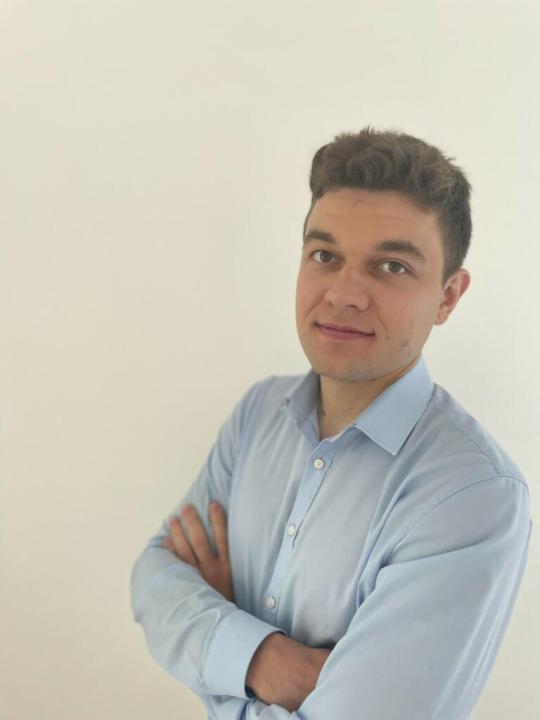
scientific lead, Dr Henrik Dreyer

President and COO Tony Uttley
Topological quantum qubits could be achieved with new materials OR with an engineered wave function. Quantiniuum-engineered wave functions by using 27 qubits with three additional qubits for control. Think of the many qubits working together like a symphony orchestra playing notes with perfect harmony and synchronization or a choir singing perfectly together.
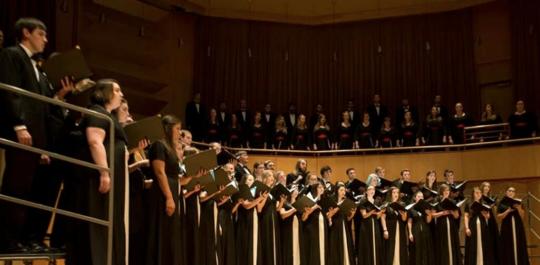
Novel Uses that Were Impossible Before
This work opens up exciting new fields of research within condensed matter physics, which would have been impossible using a classical computer alone.
This is hugely important. People have been asking what can quantum computers do that regular computers cannot? Regular computers can simulate qubit calculations up to about 50 qubit or so. Classical computers cannot perform superposition or entanglement but they can pretend to be quantum-like using formulas. The new Non-Abelian Topological Quantum state is where quantum qubits are behaving like condensed matter. The Topological quantum become like a new quantum physics exploration devices. They can explore condensed matter behavior in ways no other device can.
Particle accelerators are devices that speed up the particles that make up all matter in the universe and collide them together or into a target. Particle accelerators are devices made to explore physics and matter in energy regimes that are impossible for other devices. The Large Hadron Collider cost some $4.75 billion to build in 2012. Now, it’s reported that the CERN Lab in Switzerland plans to start construction on a new super-collider by 2035 at a cost of $23 billion.
How large would a topological quantum state system need to be to have the value of a large particle accelerator?
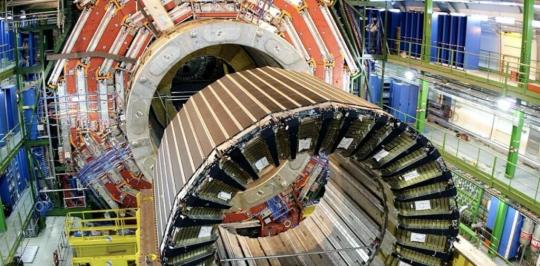
How Bad is the Noise Problem in Quantum Computers? Why is Noise Resistant SuperQubits a Big Deal?
I had a Dec, 2022 article about “what is really happening with quantum computers?” which was cited by the IEEE Quantum Journal.
Q-Ctrl had software that could remove the worst-performing qubits in a system to reduce noise by thousands of times. I looked at dozens of presentations and hundreds of slides at the 2022 Q2B (Quantum to Business conference). This is a critical slide that explains a lot about where things are at with quantum computers. You have to spend some time looking at this graph. On the X, horizontal axis, you see the qubit counts. On the Y, vertical axis, you see the probability of getting a successful answer. Below 8 qubits you are look at about 10% chance of success. At 12-13 qubits you are looking at 0.1% chance of success in getting answers. At 15 qubits there is 0.005% chance of success. Reducing noise by thousands of times lets you increase the usable qubits from about 9 to about 17.
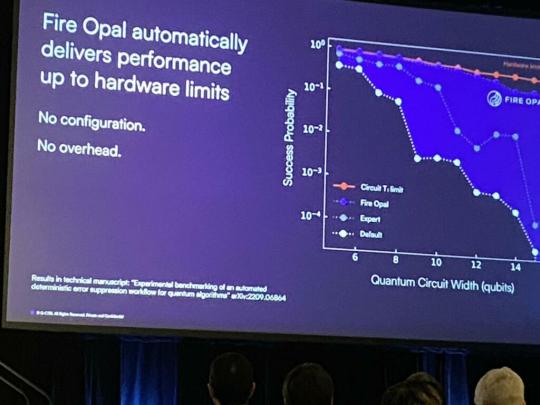
You can get answers by controlling noise and you rapidly cannot get answers in a sea of noise.
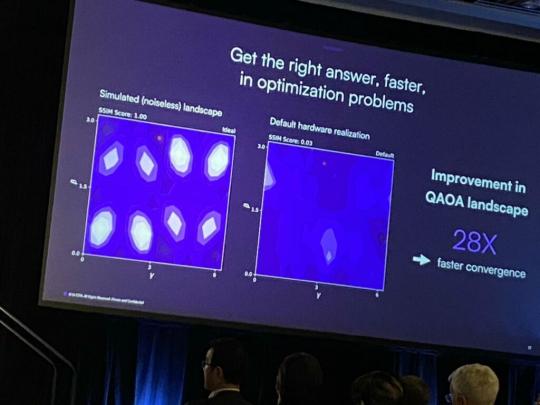
High Qubit Quality of the Quantinuum H2 Unlocked the Topological Quantum Capability
The differentiating features and precision control of the H2 processor, the topological state (that is essentially a qubit with limited gate capacity) was created in a way where its properties could be precisely controlled in real-time, demonstrating the creation, braiding and annihilation (measurement) of non-Abelian anyons.
It required the error rates and control system precision the H2 processor to “unlock” topological state capability.
There were able to flip the non-Abelian topological qubits. There is more work needed to demonstrate universality and stabilty.
The continued improvement with lower error rates and more precise control (aka gate fidelity) could unlock more capabilities.
Quantinuum is using trapped ions. This means that they are using physical atomically precise particles for qubits.
This version of the H2 has 32 qubits. Quantinuum expects to have a 50 qubit version by 2024. They had the H2 working in November of 2022 and had the non-abelian topological qubit working on Feb 16,2023. Quantinuum chose to gather more data and prove unique capability and gather data to prove they had achieved unique capability before the announcement.
If fully connected and fully usable 50 high fidelity qubits can be achieved this could surpass classical computer quantum simulation capabilties. This is one of the reasons for Quantinuum to take extra care proving out operations at smaller scales. When modules are put together and when systems are scaled it will be far tougher to test larger quantum systems.
Using the H2 Today
Besides the headline breakthrough, the H2 has already been active in experimental studies by a range of organizations and companies, with notable results:
• Global Technology Applied Research at JPMorgan Chase has published a scholarly paper on the quantum optimization algorithm design for portfolio optimization, with numerical results successfully validated on H2 during early access.
• Quantinuum’s machine learning team demonstrated a new heuristic optimization routine that can solve optimization problems with minimal quantum resources.
Innovations in H2
The H2 features initially include 32 fully-connected, high-fidelity qubits and an all-new architecture that advances the System Model H1’s linear design (with a new ion trap whose oval shape resembles a “racetrack”). Quantinuum showcased the H2’s capability by demonstrating a 32-qubit GHZ state (a non-classical state with all 32 qubits globally entangled), the largest on record.
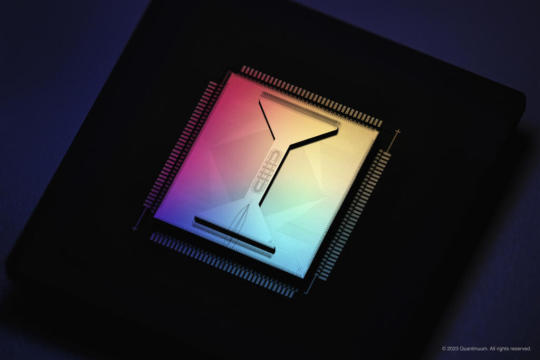
The unique “racetrack” design of the System Model H2 enables all-to-all connectivity between qubits, meaning that every qubit in the H2 can directly be pairwise entangled with any other qubit in the system. Near-term doing so reduces the overall errors in algorithms, and long term opens up additional opportunities for new, more efficient error correcting codes – both critical for continuing to accelerate the capabilities of quantum computing. When combined with the demonstration of controlled non-Abelian anyons, the integrated achievement highlights an important step in topological quantum information storage and processing.
Additionally, the new design is a powerful step towards showing the scaling potential of ion-trap devices. Not only is H2 a demonstration of the scaling power of ion traps in the quantum charge coupled device (QCCD) architecture: showing the ability to simultaneously scale qubit number while maintaining performance, it also contains new technologies that pave the way for further scaling in subsequent generations. Similar to the first-generation systems, H2 is designed to accommodate future upgrades over its product lifecycle, meaning that qubit number and qubit quality will both be improved upon.
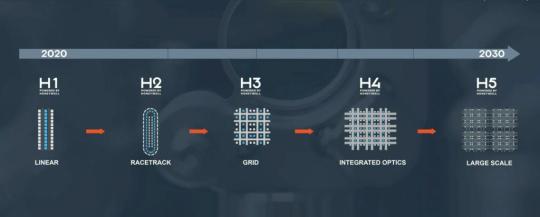
The different architectures of the H2 and the planned H3, H4 and H5 are all steps to master simpler enabling capabilities before adding new features. The H3 is a grid system which will add tighter control of the ion qubits. The H4 system will build in control lasers into the processors. This will all lead to large scale quantum processors.
H2 launches with a Quantum Volume 65,536 surpassing the last record announced using H1-1 in February of this year.
The H2 is available now through cloud-based access from Quantinuum and will be available through Microsoft Azure Quantum beginning in June. Additionally, a noise-informed emulator of H2 is made possible through NVIDIA’s cuQuantum SDK of optimized libraries and tools, which help accelerate quantum computing simulation workflows.
Brian Wang is a Futurist Thought Leader and a popular Science blogger with 1 million readers per month. His blog Nextbigfuture.com is ranked #1 Science News Blog. It covers many disruptive technology and trends including Space, Robotics, Artificial Intelligence, Medicine, Anti-aging Biotechnology, and Nanotechnology.
Known for identifying cutting edge technologies, he is currently a Co-Founder of a startup and fundraiser for high potential early-stage companies. He is the Head of Research for Allocations for deep technology investments and an Angel Investor at Space Angels.
A frequent speaker at corporations, he has been a TEDx speaker, a Singularity University speaker and guest at numerous interviews for radio and podcasts. He is open to public speaking and advising engagements.
0 notes
Text
Unlocking the Potential of Quantum Computing: Exploring the World of Quantum Technology
Quantum computing is a revolutionary technology that promises to transform our world in ways that were once unimaginable. While traditional computers operate using classical bits that store information as either 0 or 1, quantum computers use qubits that can exist in a superposition of both states at the same time. This allows quantum computers to perform certain calculations much faster than classical computers, unlocking new possibilities for everything from cryptography and machine learning to drug discovery and materials science.
One of the most exciting applications of quantum computing is in the field of cryptography. Quantum computers are uniquely suited to break the encryption that currently secures many of our online transactions and communications. This has led to a race to develop new quantum-resistant encryption methods, and has also sparked interest in the development of so-called “quantum key distribution” systems that use the principles of quantum mechanics to securely share cryptographic keys.
Another area where quantum computing is showing great promise is in machine learning. Quantum computers are particularly well-suited to performing certain types of optimization problems, such as finding the shortest route between a large number of points. This has led to the development of quantum machine learning algorithms that could have applications in everything from logistics and supply chain management to personalized medicine.
In addition to these applications, quantum computing is also expected to have a major impact in fields such as finance, energy, and materials science. For example, quantum computers could be used to simulate complex financial models more accurately, leading to better investment decisions. They could also be used to design new materials with desirable properties, such as superconductors that could revolutionize the way we transmit electricity.
Despite the tremendous potential of quantum computing, there are still many challenges that need to be overcome before it becomes a mainstream technology. One of the biggest challenges is developing qubits that are both reliable and scalable. There are currently several different approaches being explored, including superconducting circuits, ion traps, and topological qubits.
Another challenge is developing the software and algorithms needed to program quantum computers. Because quantum computers are so different from classical computers, programming them requires a fundamentally different approach. This has led to the development of new programming languages and tools specifically designed for quantum computing.
In conclusion, quantum computing is a rapidly evolving field with the potential to transform our world in ways we can only begin to imagine. While there are still many challenges to overcome, the progress being made in both hardware and software is extremely promising, and it is likely that we will continue to see significant advancements in this field in the coming years.
Get More insights on this:https://www.persistencemarketresearch.com/market-research/quantum-computing-market.asp
0 notes
Text
Three from MIT named American Physical Society Fellows for 2023
New Post has been published on https://thedigitalinsider.com/three-from-mit-named-american-physical-society-fellows-for-2023/
Three from MIT named American Physical Society Fellows for 2023
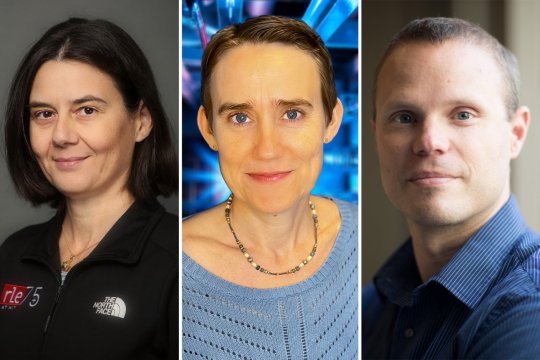

Three members of the MIT faculty have been elected fellows of the American Physical Society (APS) for 2023. The APS Fellowship Program was created in 1921 for those in the physics community to recognize peers who have contributed to advances in physics through original research, innovative applications, teaching, and leadership. According to the APS, each year no more than one-half of 1 percent of the APS membership, excluding student members, are recognized by their peers for election to the status of fellow.
The following members of the MIT community were elected APS Fellows in 2023:
Paola Cappellaro, the Ford Professor of Engineering in the Department of Nuclear Science and Engineering, professor of physics, and member of the Research Laboratory of Electronics, is an expert in magnetic resonance, coherent control, and quantum information science. Cappellaro’s area of inquiry focuses on spin-based quantum information processing and precision measurements. With collaborators, she developed the concept and first demonstrations of NV-diamond magnetometers. Cappellaro’s major contributions have been in developing control techniques for nuclear and electronic spin qubits. Her work not only provides a deeper understanding of quantum many-body systems and their environment, but also applies this knowledge to the development of practical quantum nano-devices, such as sensors and simulators. The APS Division of Atomic, Molecular and Optical Physics elected Cappellaro for groundbreaking contributions to quantum control and quantum sensing with spin systems.
Maria Gatu Johnson, principal research scientist at the Plasma Science and Fusion Center, studies thermonuclear fusion generated by a process called inertial confinement, where lasers are used to implode a spherical capsule containing the fuel to high densities and temperatures. Gatu Johnson is particularly interested in understanding the conditions that influence the amount of energy generated by the thermonuclear fusion process, and she has developed unique diagnostic tools that allow for very precise analysis of the fusion experiments. The APS Division of Plasma Physics elected Gatu Johnson for pioneering efforts in the cross-cut field of plasma-nuclear science and for groundbreaking studies of macroscopic plasma flows in inertial confinement fusion implosions.
Bradley Olsen, the Alexander and I. Michael Kasser (1960) Professor in the Department of Chemical Engineering, is the faculty director of the MIT-Brazil and MIT-Amazonia programs in MIT’s Center for International Studies and a member of the Program in Polymers and Soft Matter. His research within the physics community specializes in polymer physics, touching on areas including the physics of biomolecules, self-assembly, network physics, and polymer informatics. He is particularly interested in how biosynthesis can be used as a natural green chemistry for the preparation of designer polymeric materials, how controlled polymerization through biology can give us unique materials that provide insight into polymer physics, and the unique physics of self-assembly in complex protein nanostructures for biotechnology and energy applications. He was awarded the APS Dillon Medal for Polymer Physics in 2016. The APS Division of Polymer Physics elected Olsen for developing new theories of polymer gel mechanics that account for network topology, and for generating applied theory and experiments to advance our understanding of polymer self-assembly and dynamics using proteins and hybrid protein macromolecules as model polymer systems.
Ten additional alumni were also elected to the APS this year. They are: Reba M. Bandyopadhyay ’93; David L. Hu ’01, PhD ’06; Kerwyn Casey Huang PhD ’04; H. Pirouz Kavehpour PhD ’03; Boris Kozinsky ’00, PhD ’07; Manyalibo J. Matthews PhD ’98; Felix I. Parra SM ’07, PhD ’09; Dmitry A. Pushin PhD ’07; Caterina Riconda PhD ’97; and Sarah Veatch ’98.
#2023#Analysis#applications#Awards#honors and fellowships#Biology#Biomolecules#biotechnology#Brazil#Center for International Studies#chemical#Chemical engineering#chemistry#Community#development#devices#dynamics#electronic#Electronics#energy#engineering#Environment#Faculty#fuel#Fusion#green#green chemistry#how#hybrid#InSight
0 notes
Text
New Paper Alert!
"Fricke Topological Qubits" co-written with Michel Planat, David Chester & Marcelo M. Amaral. It was just published in MDPI's Quantum Reports Journal, describing progress towards an understanding and possibly an implementation of quantum computation based on algebraic surfaces. #emergencetheory #quantumgravityresearch #QGR #kleeirwin
0 notes
Text
Survey of quantum error correction codes

#Survey of quantum error correction codes code
#Survey of quantum error correction codes code
The theory of fault tolerance and quantum error correction is reviewed, and examples of various codes and code constructions, the general quantum error-correction conditions, the noise threshold, the special role played by Clifford gates, and the route toward fault-tolerant universal quantum computation are discussed. In this review the formalism of qubit stabilizer and subsystem stabilizer codes and their possible use in protecting quantum information in a quantum memory are considered. The review does not focus on a particular technology but discusses topics that will be relevant for various quantum technologies.Ībstract = "Active quantum error correction using qubit stabilizer codes has emerged as a promising, but experimentally challenging, engineering program for building a universal quantum computer. The complexity of decoding and the notion of passive or self-correcting quantum memories are discussed. The second part of the review is focused on providing an overview of quantum error correction using two-dimensional (topological) codes, in particular, the surface code architecture. Active quantum error correction using qubit stabilizer codes has emerged as a promising, but experimentally challenging, engineering program for building a universal quantum computer.

0 notes
Text
Inca knots inspire scientific innovation!
Inca knots inspire scientific innovation!
-The new qubits are the same, encoding data in the topology of the material.
-In practice, Quantinuums H1 processor uses 10 ytterbium ions trapped by lasers pulsing in a Fibonacci sequence.
-If you consider a conventional qubit to be a one-dimensional affair the qubits state this new system acts like a two-dimensional system, where the second dimension is time.
-The actual paper is paywalled at…
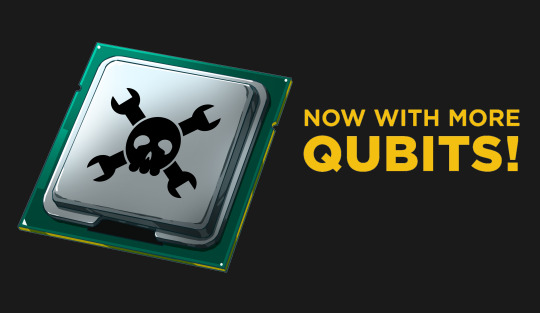
View On WordPress
0 notes
Quote
Indistinguishability of particles is a fundamental principle of quantum mechanics. For all elementary and quasiparticles observed to date - including fermions, bosons, and Abelian anyons - this principle guarantees that the braiding of identical particles leaves the system unchanged. However, in two spatial dimensions, an intriguing possibility exists: braiding of non-Abelian anyons causes rotations in a space of topologically degenerate wavefunctions. Hence, it can change the observables of the system without violating the principle of indistinguishability. Despite the well developed mathematical description of non-Abelian anyons and numerous theoretical proposals, their experimental observation has remained elusive for decades. Using a superconducting quantum processor, we prepare the ground state of the surface code and manipulate it via unitary operations to form wavefunctions that are described by non-Abelian anyons. By implementing a unitary protocol to move the anyons, we experimentally verify the fusion rules of non-Abelian Ising anyons and braid them to realize their statistics. Building on our technique, we study the prospect of employing the anyons for quantum computation and utilize braiding to create an entangled state of anyons encoding three logical qubits. Our work represents a key step towards topological quantum computing.
[2210.10255] Observation of non-Abelian exchange statistics on a superconducting processor
0 notes